As far as Bulge games go, adherents are visceral in their love for one game or another. A’44 or Ardennes ’44 is no exception. Mark Simonitch has perfected this system that I will loosely call the ZOC Bond system given its prominence in all of the ;44 games, to such a degree that games come to us out of the box almost flawless. I’ve had the pleasure of meeting Mark a handful of times and always enjoy his company however briefly that may be. Wether we are talking about Bitterwoods, The Last Blitzkrieg, or a host of other titles Bulge fans tend to be drawn into the conflict, and the systems that support the exploration of the operation as a whole.
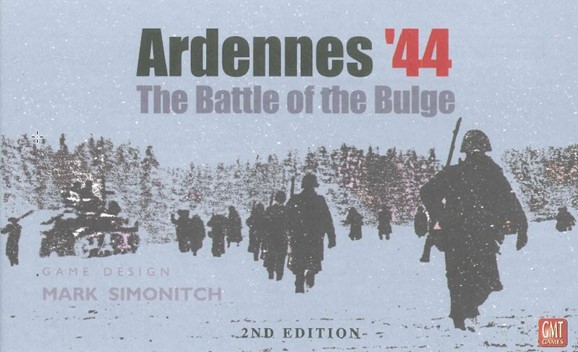
Steeped in American military history the battle has taken on an outsized role in the outcome of WWII. There is no point me outlining the operation, or analyzing the doomed from the start concepts of the Battle of the Bulge. You either know them or can learn more on google in 5 minutes than I can type in the same time.
- Great voice over that summarizes the events:
To sum up, Hitler orders an unrealistic last ditch offensive targeting an unreachable goal of capturing Antwerp in order to sue for peace from a position of strength. The Allies quiet possibly should have know about this, however missed the signs, but nevertheless overcame after an arduous battle in the depths of winter in harsh conditions against a desperate foe.
Stuff ripe for a movie or three! There are many stories told via dozens of books [see list below for some of my favorites ] about the leaders, the men, the battles for the key roads, junctions and by ways. A’44 brings this all to life at the divisional scale, with Brigade & Regimental units fighting it out in the most frustrating terrain for modern warfare – Wooded trails & roads.
AAR
Turn 1
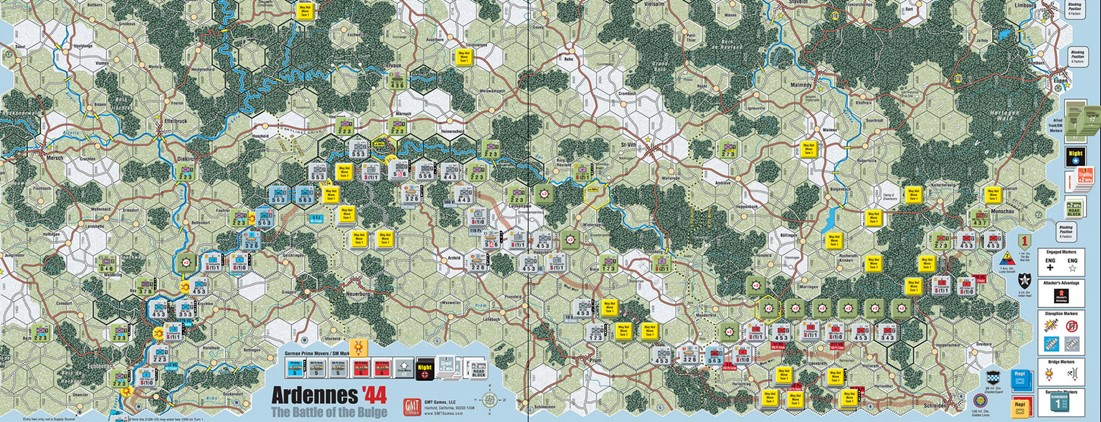
With much guidance from my opponent [Steve A.] we worked thru turn 1 and his initial attacks on the American defense. It’s at this moment half way thru combat that I recall all the other Bulge games Steve and I have played and others that have been looked at also. Girding my loins, I hunker down for the beating for the next 10+ turns. Part of the price you pay for playing a Bulge game as the US side!
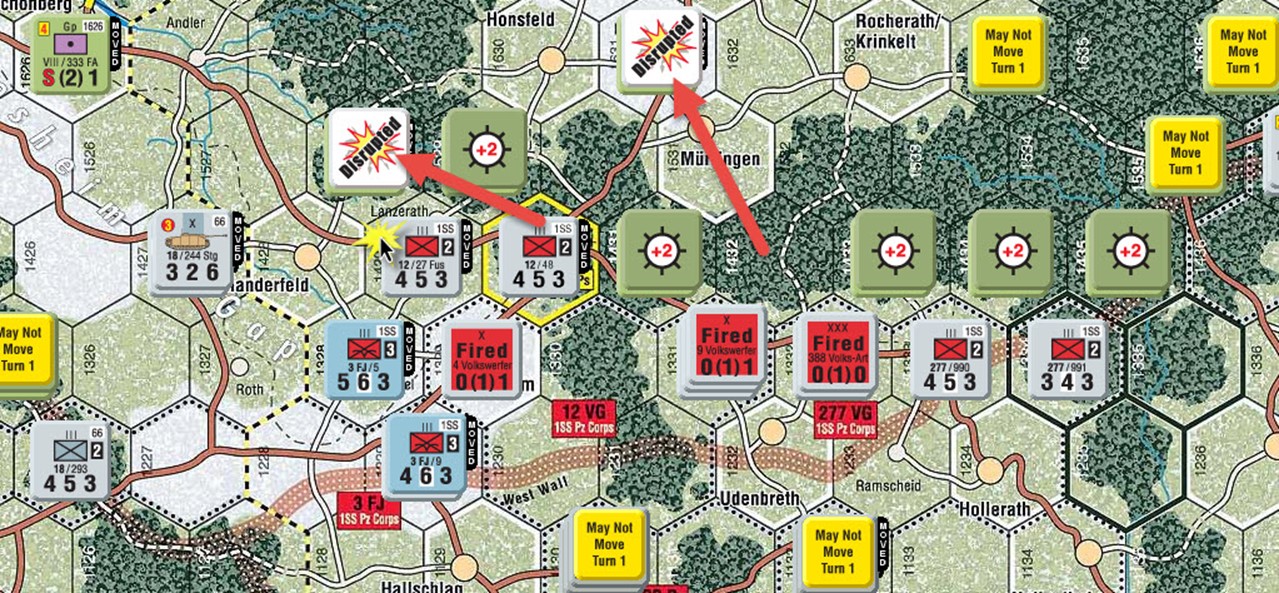
EOT 1
Some adroit advice helped me grok the ZOC bonding, and various movement modes. One thing I find frustrating to keep track of here, is who is moving in which manner? Which mode is best? Why? What is the impact? How does it help me?
The Role that you take on is well defined, that over overall commander of the sector of the map in essence a Corps commander or Eisenhower himself, where you will be required however to jump in and select Brigades/Regiments to be used in defense or counter attack. Your decision space as the Allies is strictly limited to countering attacks, fend off attacks and giving ground slowly until Patton’s forces arrive on the left hand side of the map. As the German it’s all offense all the time until such time as the engine runs out of steam relative to the time remaining against the VC metrics.
Which like nearly all Bulge games come down to certain cities and towns captured by X date or your fail. The Order of Battle is well done not as granular as newer titles such as the Last Blitzkrieg, but solid.
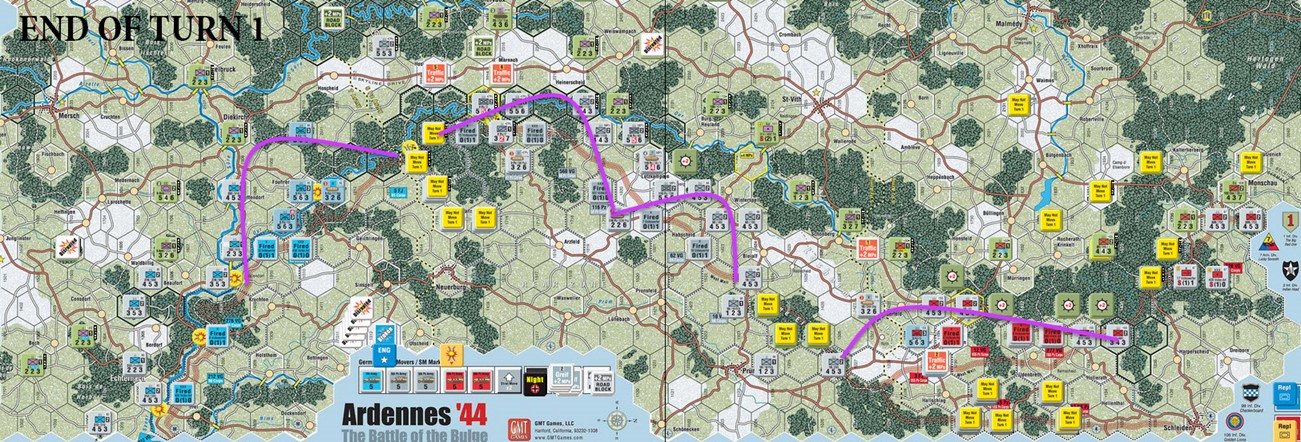
By end of turn 4 below, you can see that the Germans have taken the key interior line from Dielbreck – Marnach – Hienerscheid [ part of the Bloody 110 TCS title maps space!] road way that cross left to right. This will prove to be a challenge for the Allies to work around and will aid the Germans ability to change the focus of attack quickly.
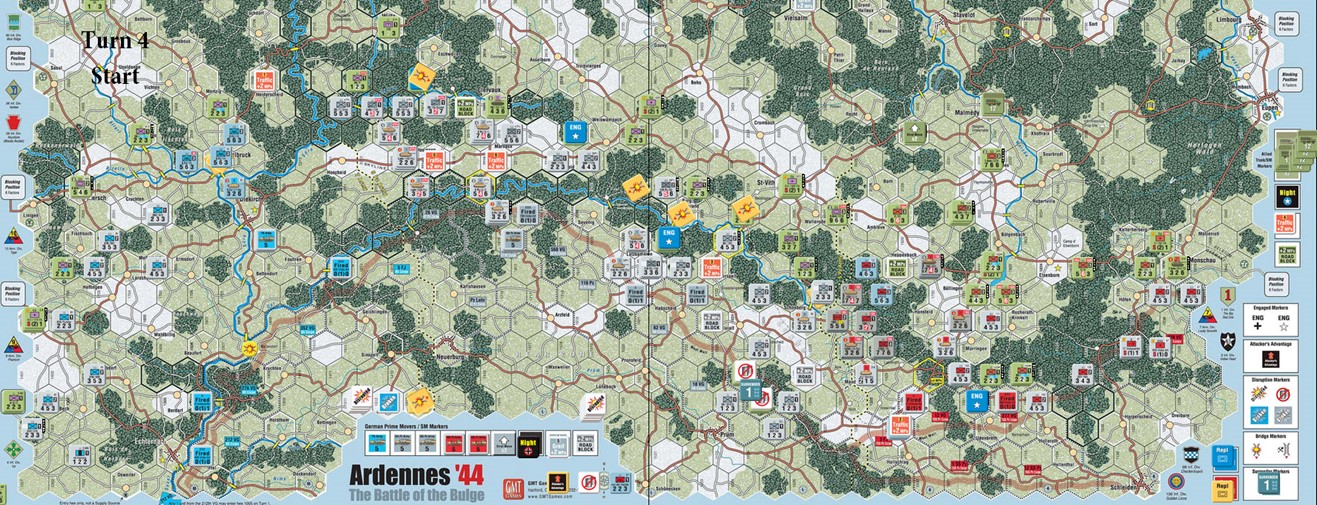
T4 EOT
The Germans have pressed the US back to the left side of the map and dug deep into US held areas in 3 critical locations. The turn highlights for the US are rolling for the random placement and withdrawal of Roadblocks/blown bridges and traffic jams. While at first this feels artificial the designer notes that snarls, backups and blown bridges ‘appeared’ at the worst times for the Germans. Who better to invoke those than the hapless yanks?
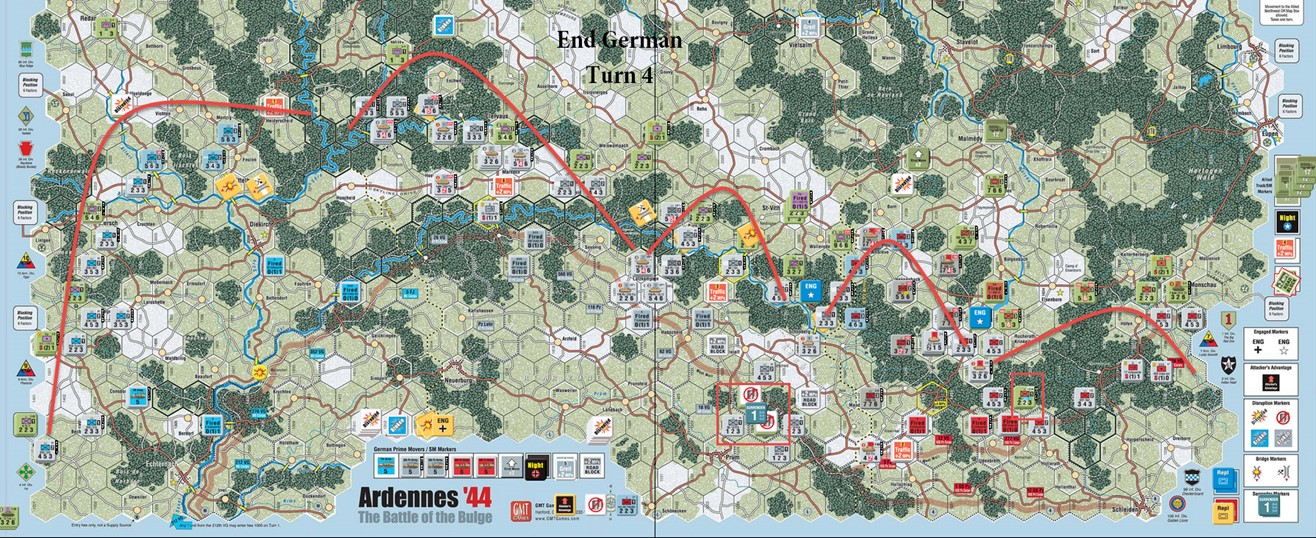
Turn 5
We can see Bastogne top of screen image below with the blue replacement marker. The Germans make rapid head way. As the US player I’m more worried about a left flanking manoeuver which does not appear to being taken advantage of. Not much stands between the Germans and Marlelange!
Shutting down reinforcements along that entire front would be a disaster! In time it can be overcome but at great cost in ‘held units’, that are kept off board to prevent further movement of the Germans out of scope and off map. This is a nice feature of this game that some other Bulge titles do but there are some that don’t. It forces you to guard the flank.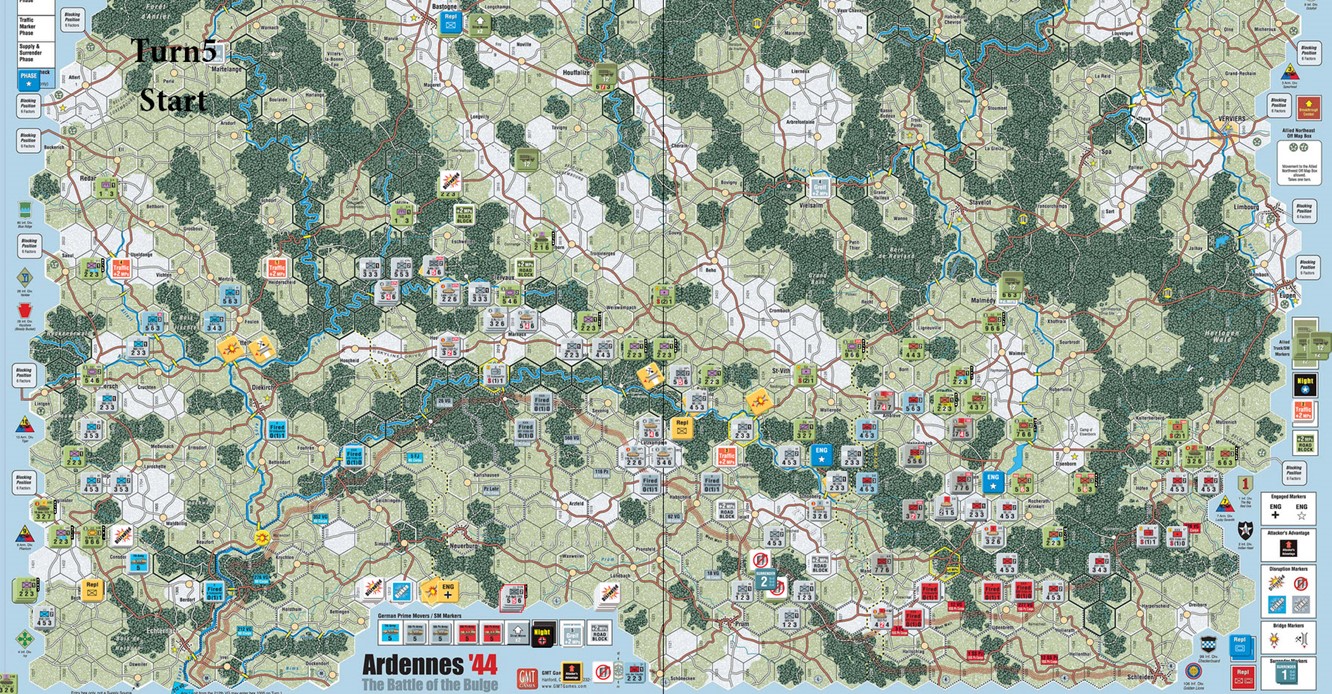
Which brings us nicely to scope. The game runs daily turns with an AM /PM and brief Night turn. So about 8 hours of time per turn. The hex scale is 2.6kms. As previously mentioned we are working with Battalions as the smallest element and the rest are Regiments and Brigades. Well in fact that is not entirely true. As there is another level of detail down to company and TF (Task Force). So while you are managing multiple divisions really you are deciding on low level tactical finesse. Thus Granularity is relatively high. Which combination of units with the right attribute will provide the best set of Column shifts and DRM’s to maximize the kill chances, Morale, Elite status, unit type, artillery, air etc. These units also play a factor in how many can be squeezed into a hex. Stacking in this game seems to have gone thru several iterations on limits and there are house rules and optional rules and just as many opinions as to what that stacking limit should be.
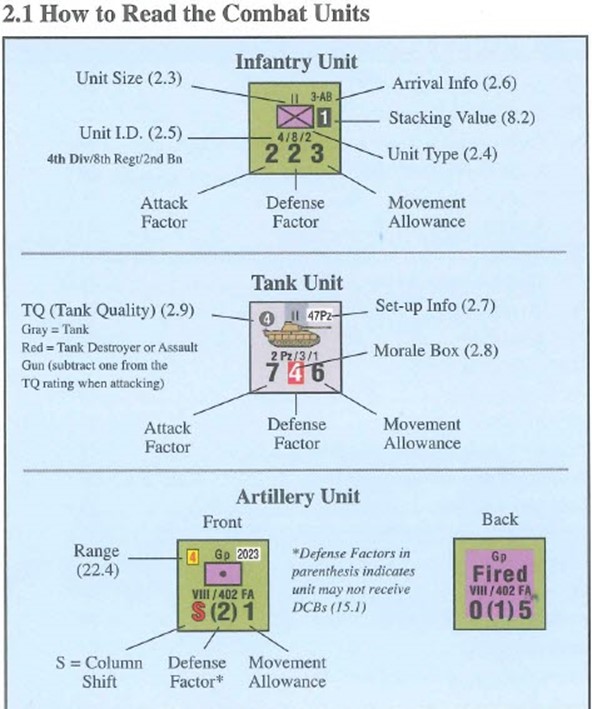
The Game sequence is a standard affair, Arty supply is handled first then the German fuel shortage once that historical trigger is flipped on the turn track. That is followd by bridging, movement and rally. Then combat, traffic and supply.
The game layers in nuance to units states via disruption, breaking and dying. It layers in nuance via the multiple modes of movement, and means of movement. Allied foot units can use trucks in certain circumstances, the German Arty Prime movers. There is Strategic movement, Extended movement, Tactical movement and of course exceptions for each and for most types of terrain – West Wall, Forest, Rivers, wooded rough, traffic markers and the like.
This gives the player a lot to think about and probably evokes a bit of frustration on play #1. By turn 5 or 6 though you are likely using the right mode at the right time. I found writing a list of movement options down, and referring to as I considered what needed to happen allowed me to choose which guys used a certain mode of getting from A to B.
A similar level of detail is involved with combat as previously mentioned. The CRT for conflict resolution is fascinating. While at first a drab looking 1:X- 7:X CRT a closer examination reveals that there is again a lot of layers. I like this CRT much more than Caucasus Campaign.
Here the mods and more importantly the results are quite varied. The defender has to pay attention here as he may well be able to choose to take a chance and modify the result, if not thru a lucky Arty roll then via the results of Firefights or Determined Defense tables that require a subsequent roll after the combat result.
Which brings me to my major and really only peeve with this game….advance after combat. I’ve written, spoken and railed against this rule enough. So I’ll just say that I find the idea that attacking forces can advance in ANY direction post combat at this scale of map and duration for a turn a farce…there. I said it. For me it feels like a major design for effect, to allow the German army a chance. Other choices no doubt were explored and rejected so it is what it is.
The second nit pick is this ongoing saga over stacking limits or rather the need to limit the # of combat factors in any one combat for either side as the attacker. It was 12 [but apparently it wasn’t, then 15 optionally then unlimited then recommended back to 15. But 15 is untested… Really. Pick a number, explain it and go with it. In our game we used unlimited… The Germans still failed, but only just and I would not play that way again.
Turn 6
Six turns and the game begins to evolve the typical bulge characteristics.
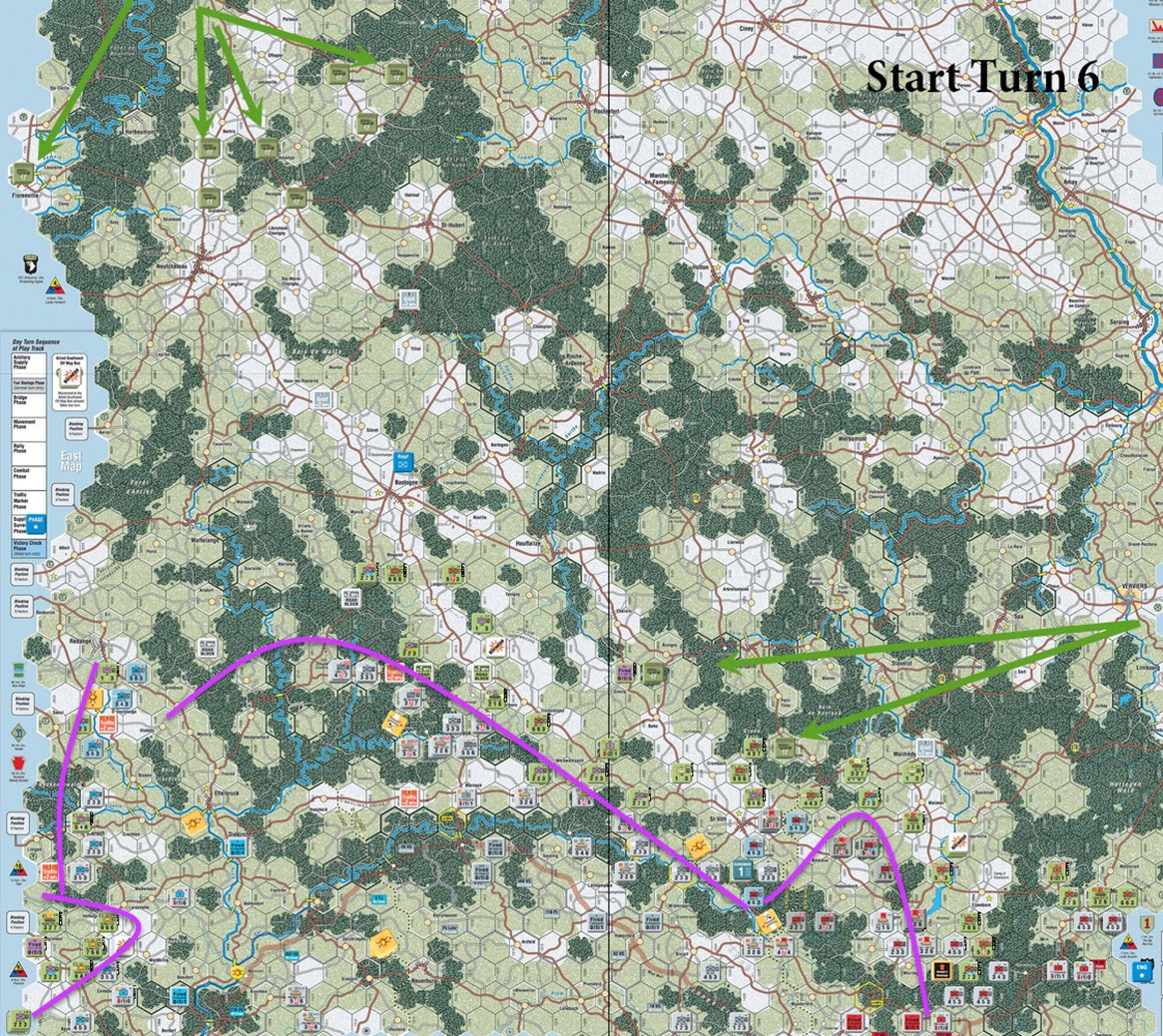
Start Turn 7
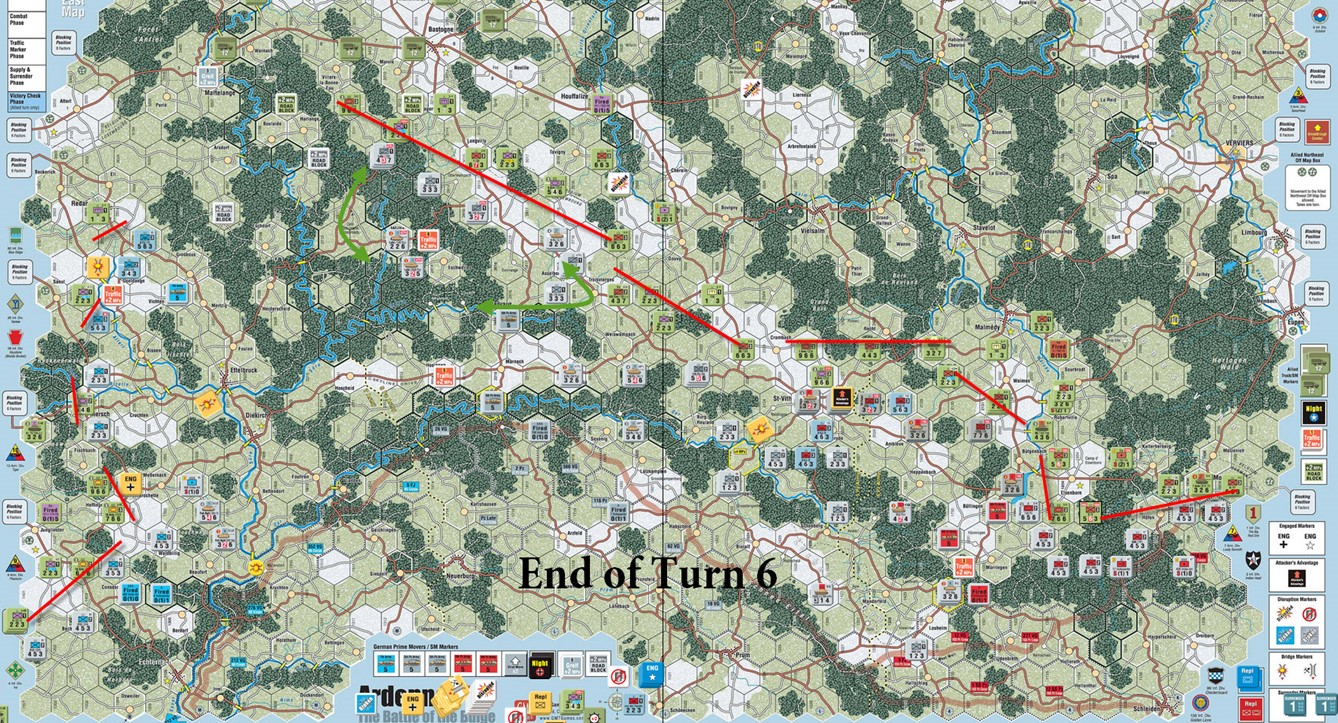
A flurry of attacks by the German make a dint and force a number of key retreats.
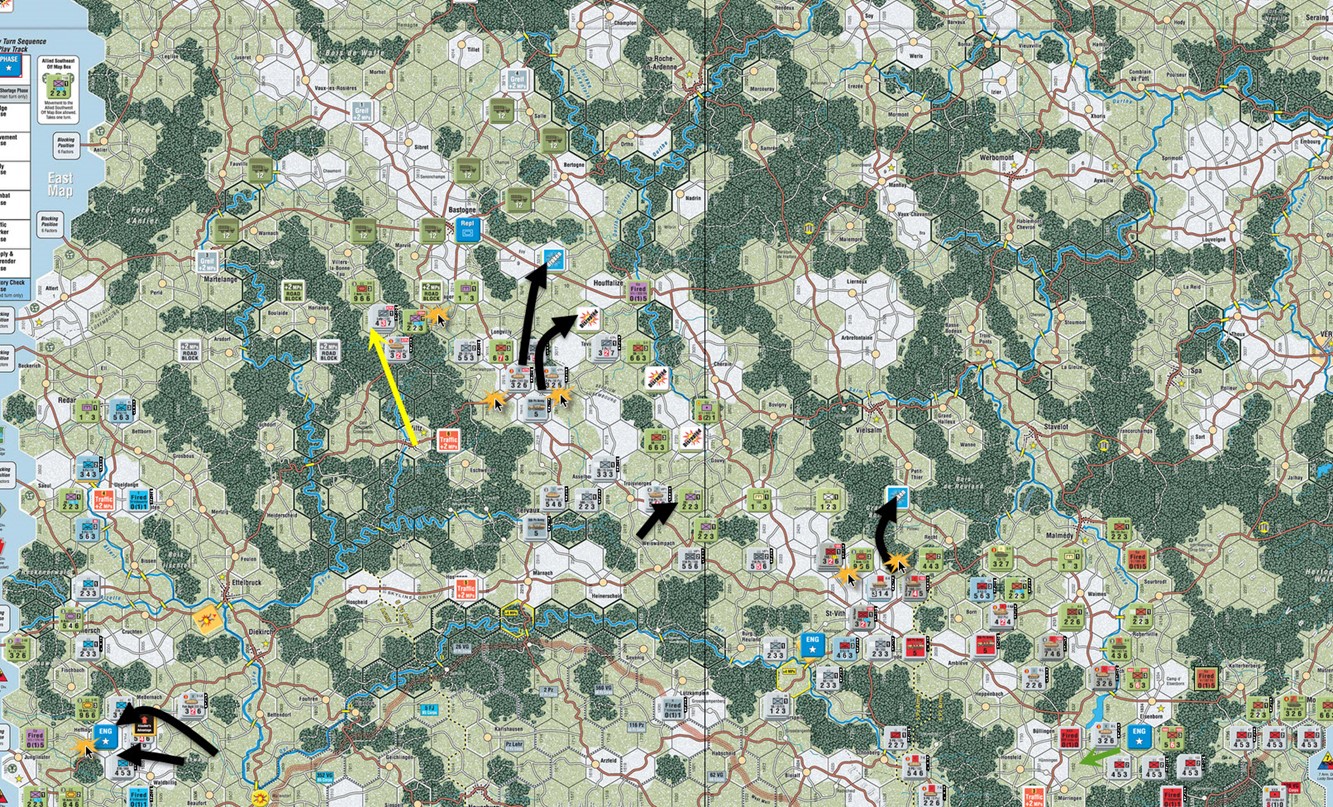
The black lines represent the numerous retreats inflicted upon the Allies. The orange stars are attacks. Which happened across the entire front! The Germans are pressing up hard on Bastogne and looking for river crossings on the right flank.
Turn 8:
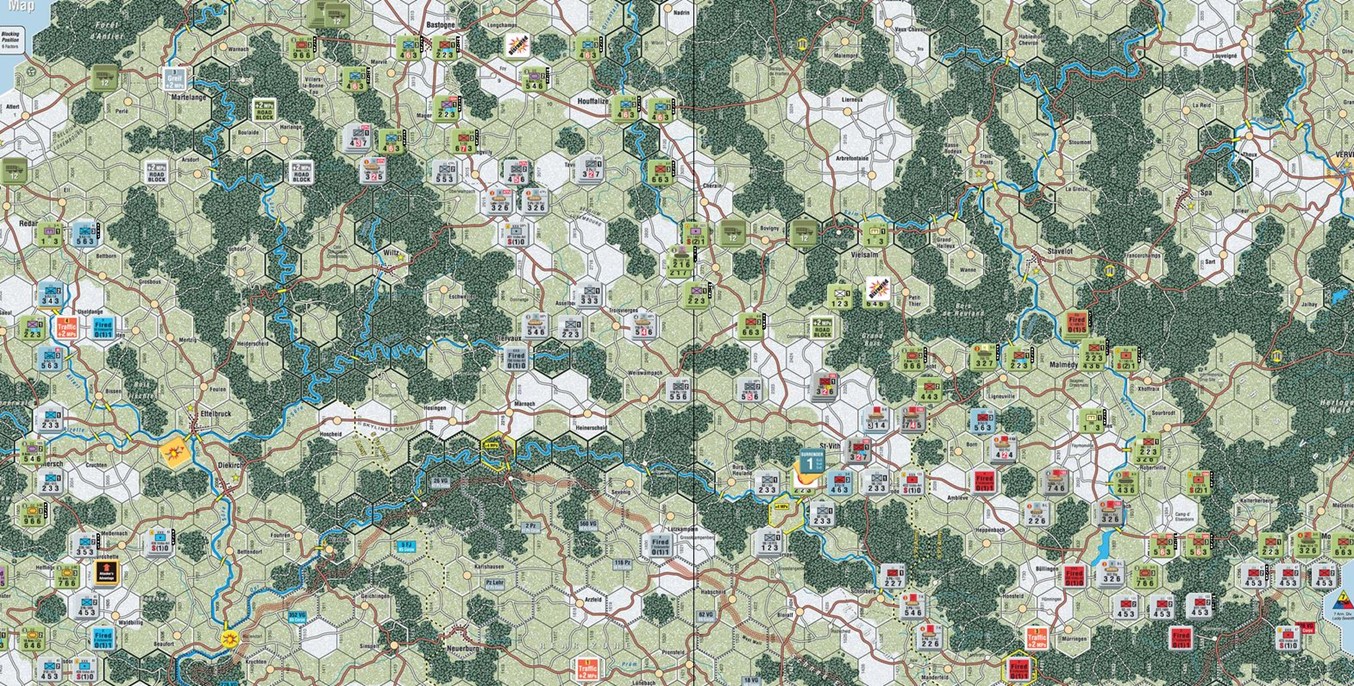
Turn 9:
Other than Bastogne the Allied line is stabilizing and on the left flank the US is readying to put pressure on the Germans.
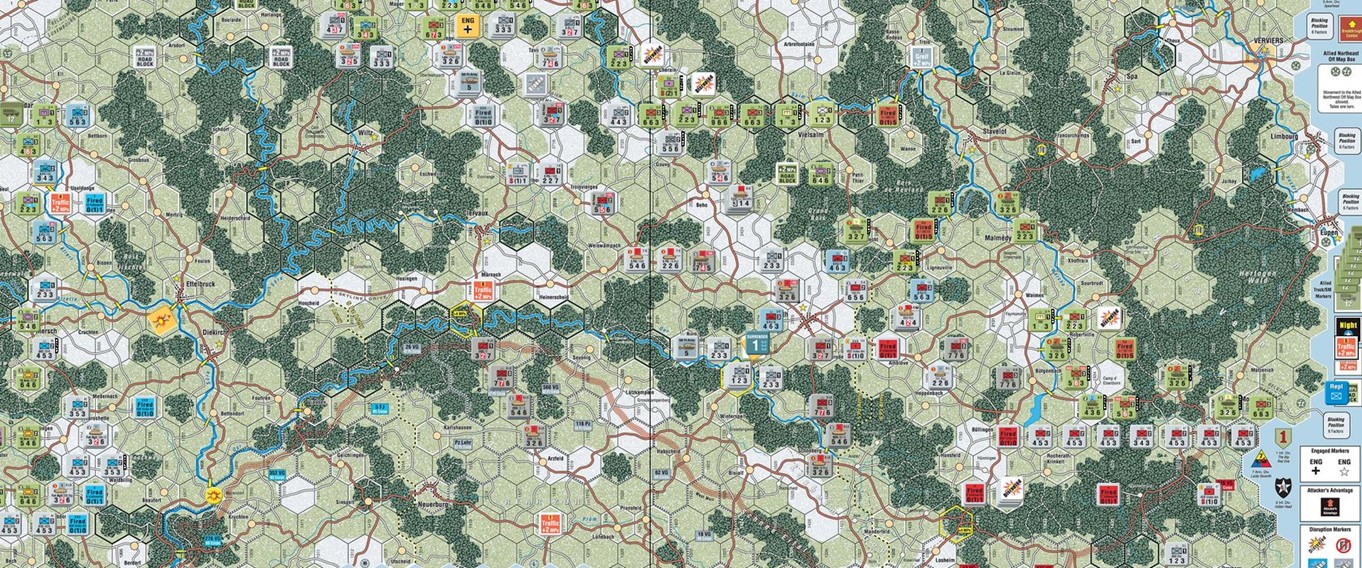
Turn 10
Timely reinforcements allow the US forces to build a bit of depth. This aspect and the opening turns do feel fairly heavily scripted. While bringing the historical exactitude to the fore it does seem to limit the ‘what if ‘elements.
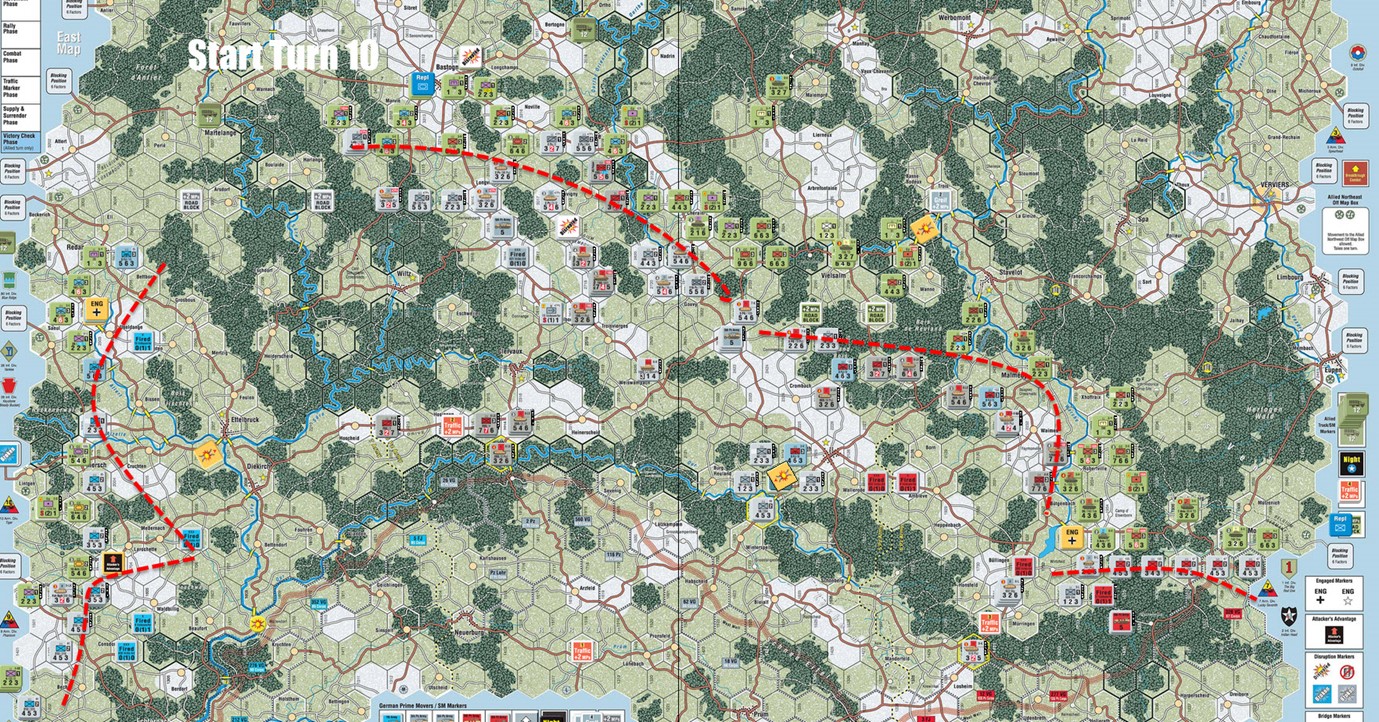
Turn 11
By the 21st of December the battle for the Bulge is really under way and the US line is hard pressed all over. Any thoughts of maneuver warfare, and mobility vs mass go out the window. Grim little American units hang on in the frozen landscape and await death.
On the left the Allies have been forced to place units in two off map holding boxes. This reflects the pinning forces required to ensure no German movement in that direction.
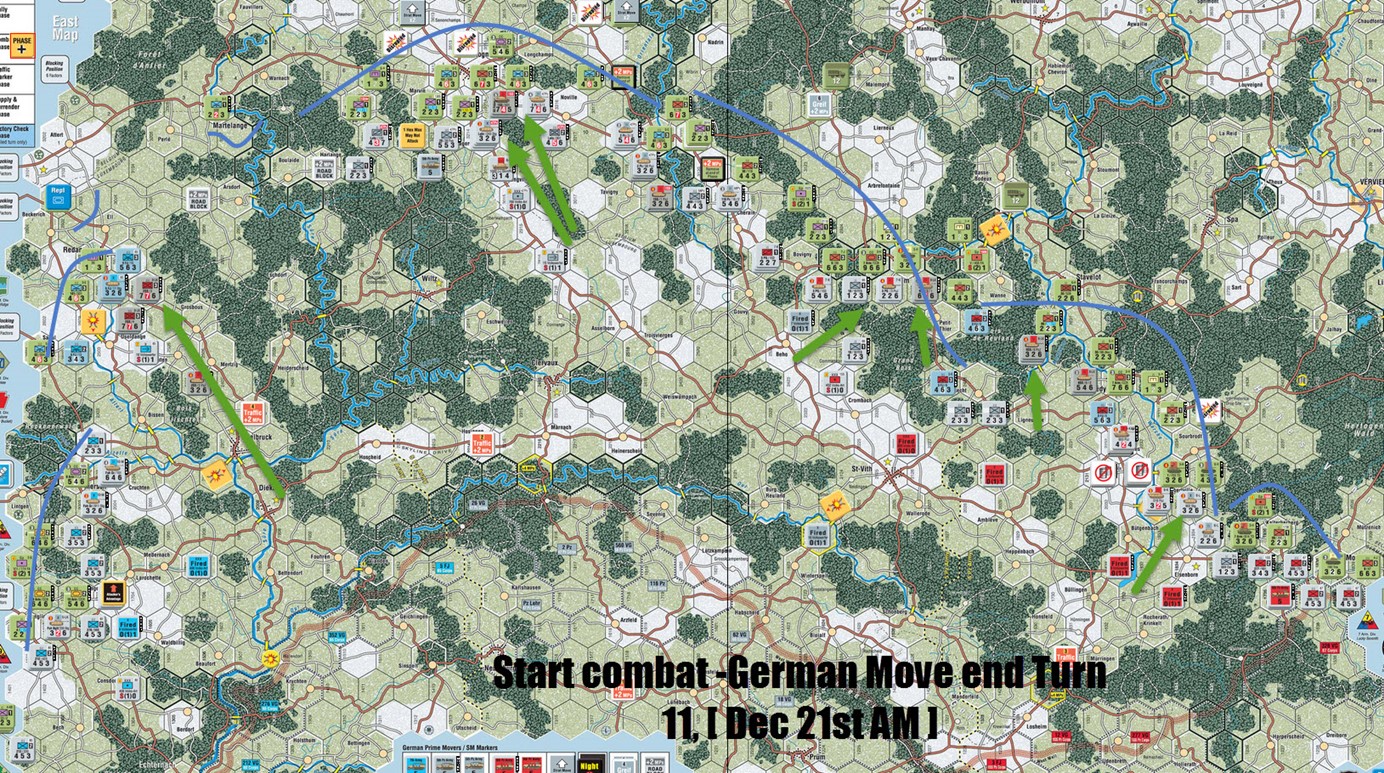
A beacon of hope! The fuel shortages kick in at pre destined time, rolling for where it hits can be a blessing and an obvious curse.
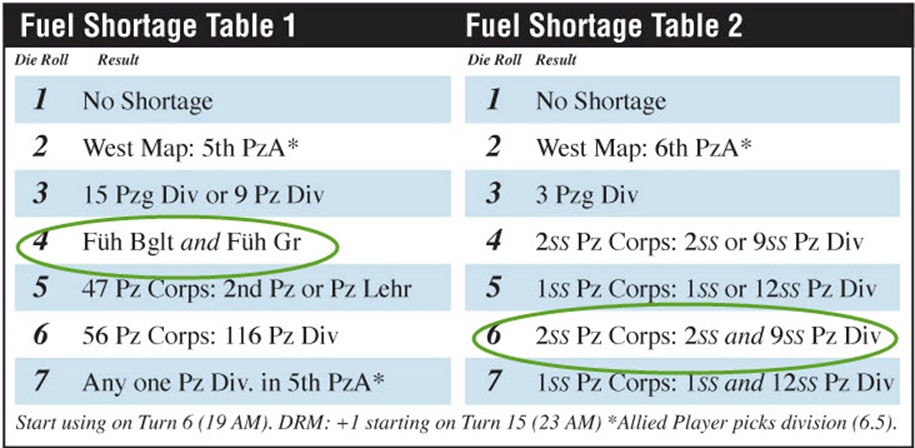
The Logistics aspects of any Bulge game can make or break the game. In A’44 the Germans face a random table tied to historical considerations of potential units out of fuel and those limited in action. The US on the other hand has your standard for this scale, supply considerations seen in many games. X hexes to source etc.
Turn 12
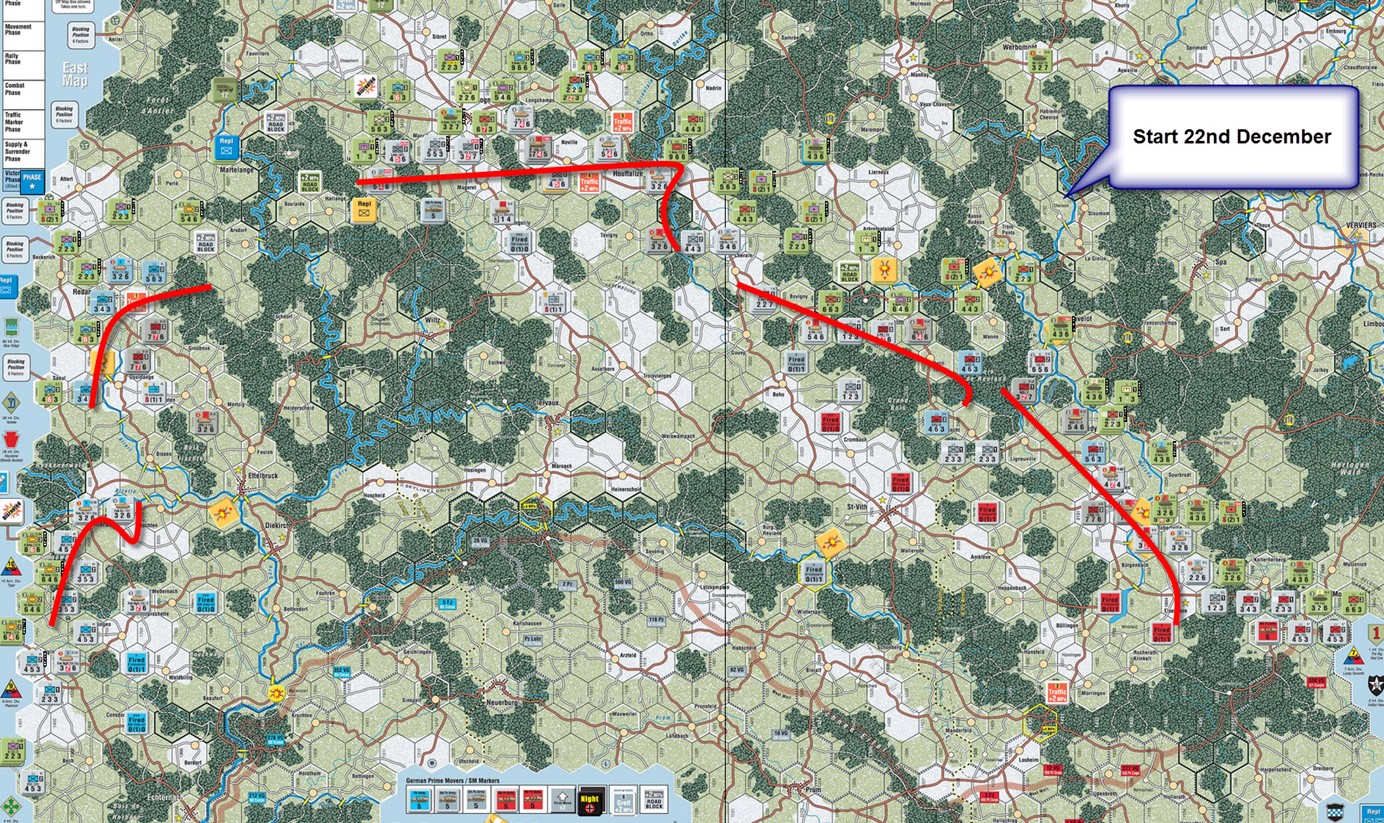
Turn 13, 23rd of December.
Allied Start:
You can see that despite the growing pressure on the Bastogne situation the US is finding forces to cobble together to press hard on the German left. Here it is important to be aware of the variety of stacking rules and divisional cohesion [attack bonus’s and arty availability] rears its head. If you have the wrong units around Arty wont be able to be called. Divisional integrity is critical.
Which in the opening turns was hard to keep together as you raced to block, the German advance. Thus some of the proposed allied attacks are not as effective or postponed all together due to poor unit placement and lack of Arty support [column shift].
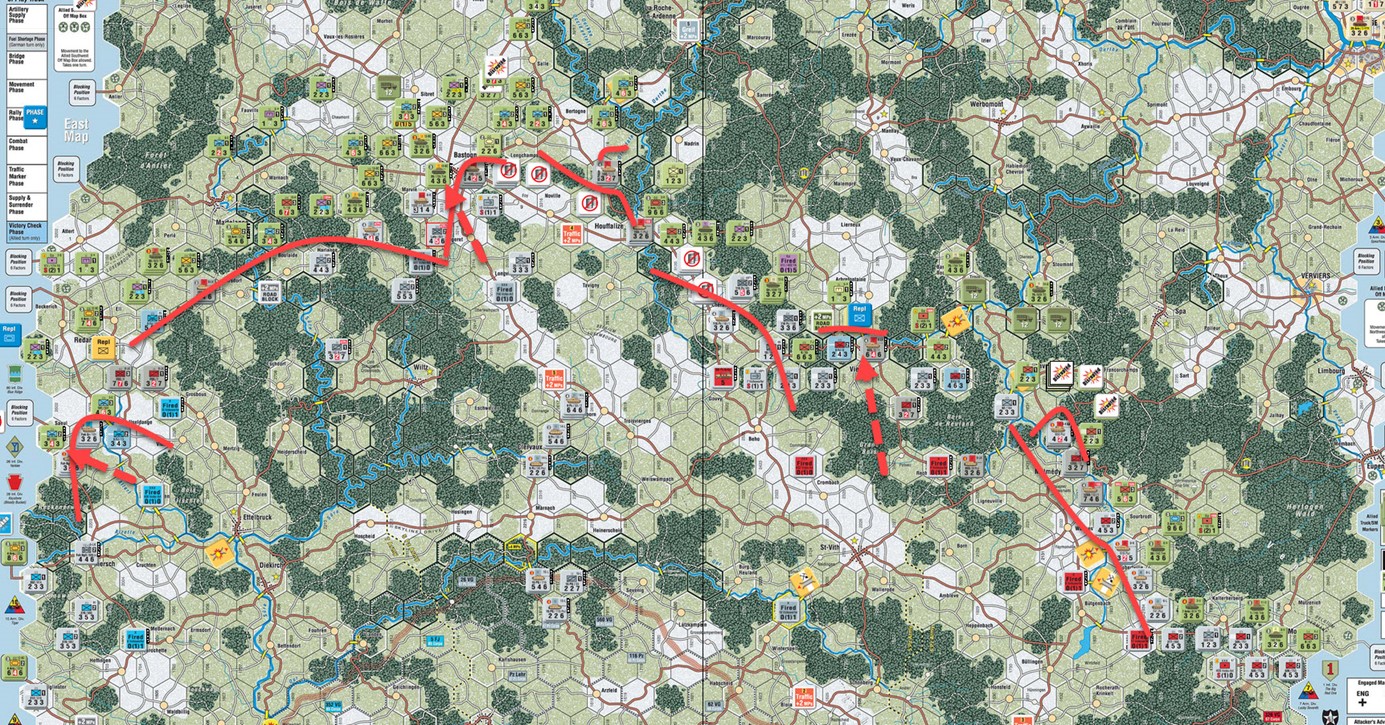
If not for a good Jabos roll this game was likely over for the Allies!
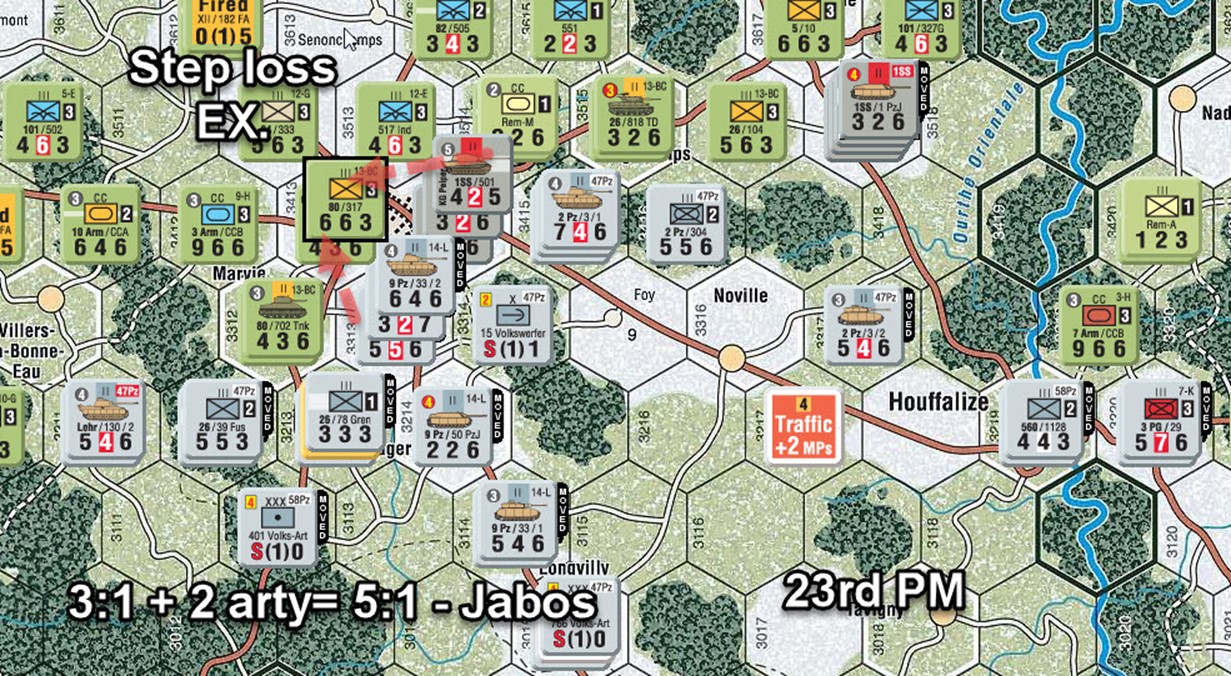
The Jabos rule clearly shows the impact of air power and spotting. The fall of Bastogne this turn was critical for the German plan and would have seen a very different end result we thought, if the cross roads had fallen this turn. The Jabos single handedly turned the tide.
The losses have mounted for the Germans and the air is leaking from the drive. This somehow stuck in my craw. To fight so long and so hard to maximize the defense only to have the ONLY saving grace be a lucky die roll on a table that drops the odds two columns felt fickle.
Not that war aint fickle mind you, but the German player did a great job of getting the right units to the right place and the right time only to be thwarted this way certainly gave me a hollow sense of accomplishment. I don’t know that the Germans had enough ‘gas’ and punch to make a big move in the coming turns if they had of captured Bastogne, but that stop right there meant the game was effectively over.
Turn 16
23rd Dec PM.
And indeed we called the game, as the timetable for VP’s slips out of the German grasp. When I started playing A’44 I was not a fan.
There are a handful of elements outlined above that influenced me. Much of the frustration tho was the intermittent play cadence and constant refresher we had to do [’cause..I’m like that]. Taking that into consideration and looking at all the subtle design impacts that are here, I have changed my early opinion. This title could well be the single best and most playable Bulge game available today over and above even Last Blitzkrieg, Bitterwoods and Iron Tide. Making the investment in the game system is worth the effort. With further plays I think one could even grow to love the designer’s style which has really evolved since The Legend Begins and some other earlier titles. With the advent of Holland ’44, lets see what is in store!
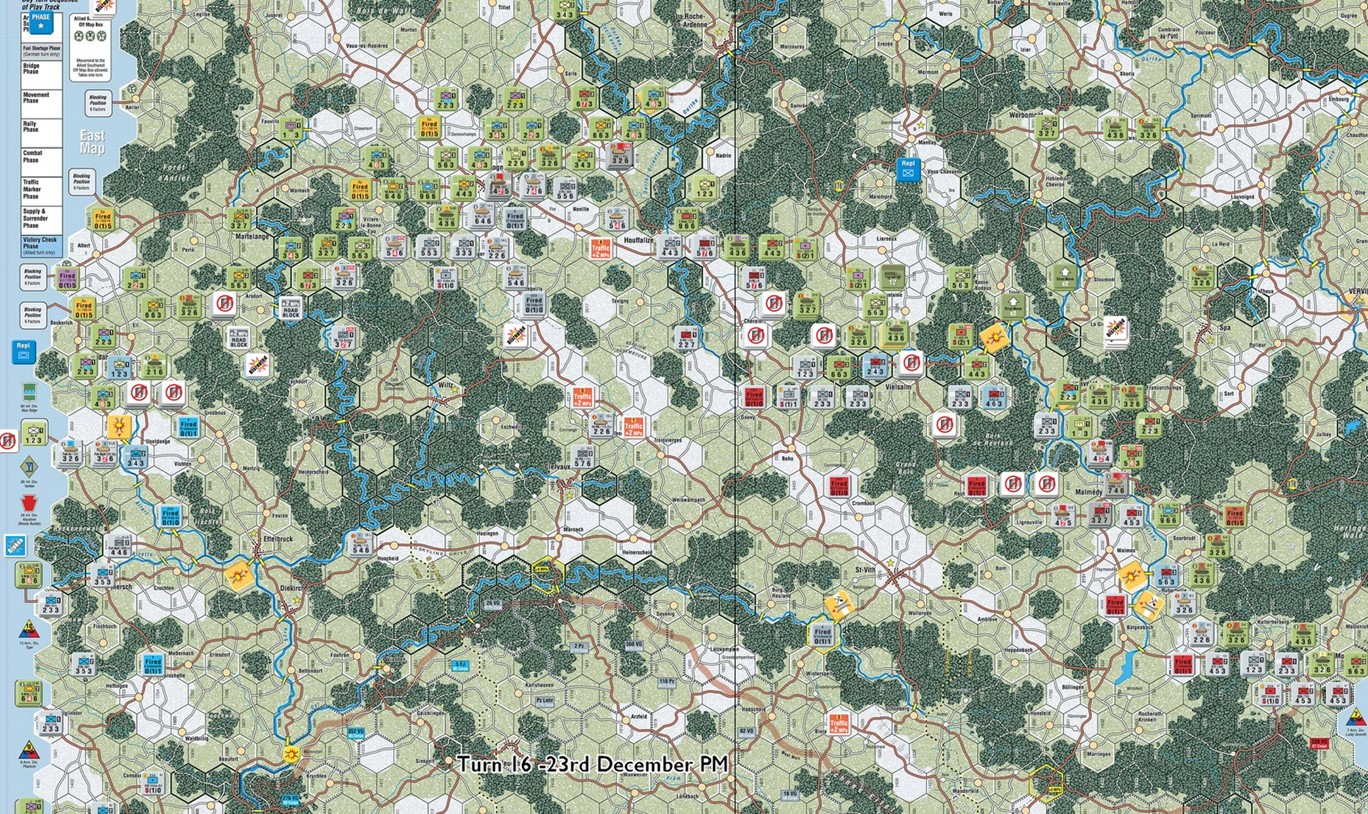

Nicely done. Anxiously awaiting the latest reprint to get (another) copy of A ’44.